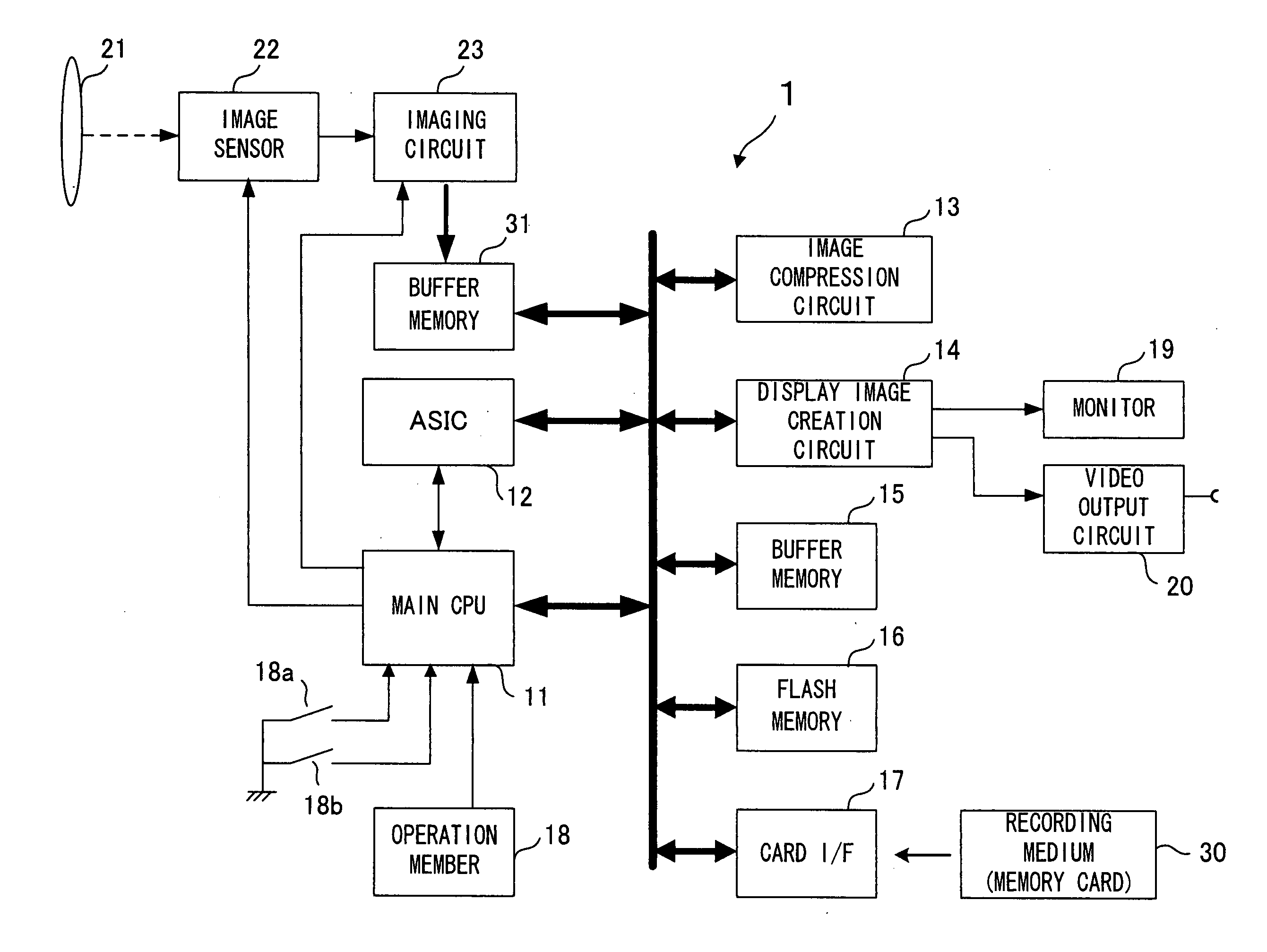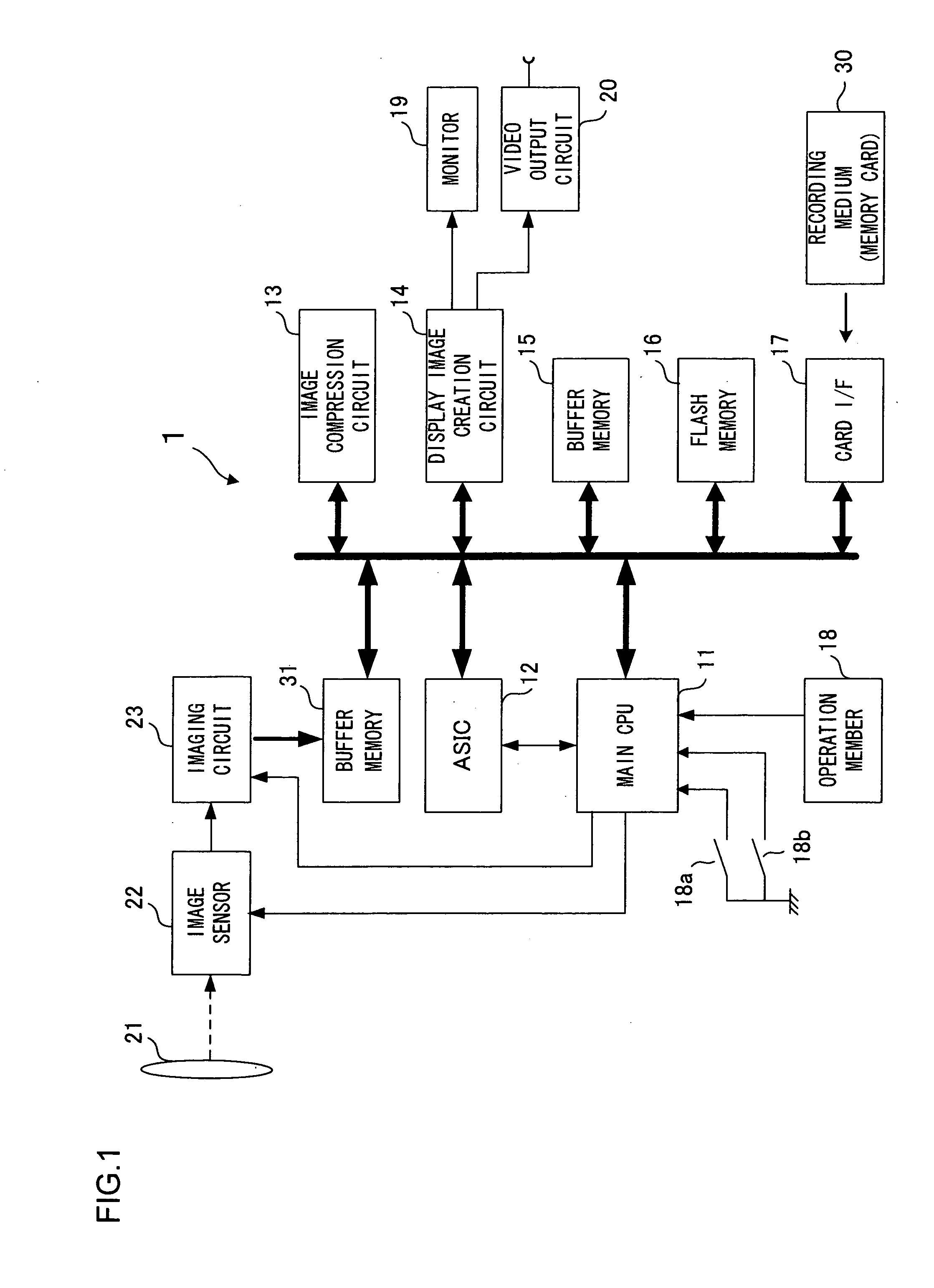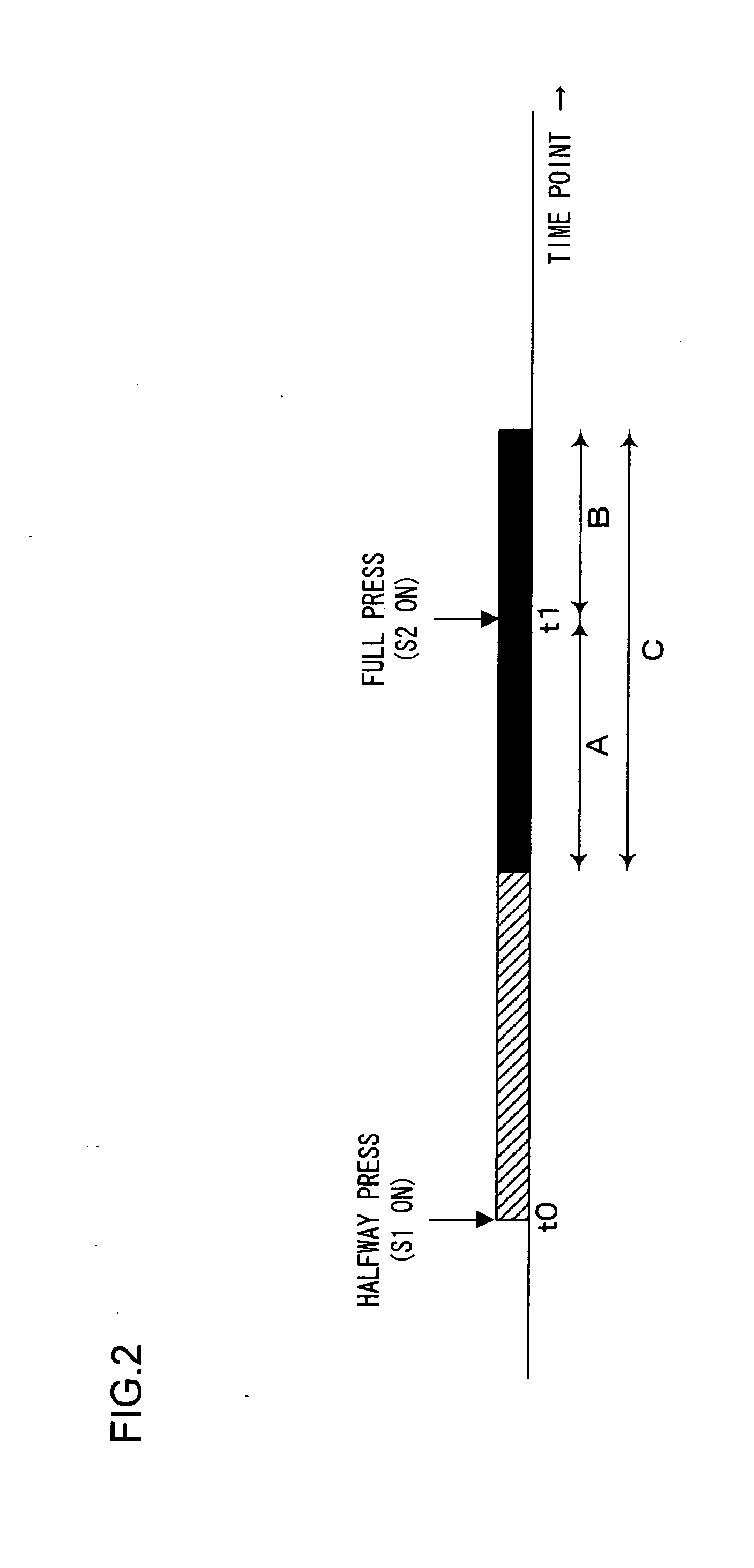Imaging apparatus
a technology of imaging apparatus and spherical tube, which is applied in the direction of color television details, television system details, television systems, etc., can solve problems such as difficulty in setting a desirable ratio
- Summary
- Abstract
- Description
- Claims
- Application Information
AI Technical Summary
Benefits of technology
Problems solved by technology
Method used
Image
Examples
first embodiment
[0032]FIG. 1 is a block diagram showing the essential components constituting an electronic camera 1 achieved in the embodiment of the present tension. The electronic camera 1 is controlled by a main CPU 11.
[0033]A subject image is formed through a photographic lens 21 onto an image-capturing surface of an image sensor 22. The image sensor 22, which may be constituted with a CCD image sensor or a CMOS image sensor, outputs imaging signals obtained by capturing the subject image formed on the image-capturing surface, to an image-capturing circuit 23. The image-capturing circuit 23 executes analog processing (such as gain control) on the photoelectric conversion signals output from the image sensor 22 and also converts the analog image-capturing signals to digital data at a built-in A / D conversion circuit.
[0034]The main CPU 11 executes predetermined arithmetic operations by using signals input thereto from various blocks and outputs control signals, which are generated based upon the ...
second embodiment
[0082]The initial value C is reevaluated in the second embodiment based upon the time difference Δt between the time point at which the frame image selected in step S8 (see FIG. 3) was obtained and the time point at which the full press operation signal originating from the full press switch 18b was input. In reference to the flowchart presented in FIG. 5, the flow of the initial value learning processing executed by the main CPU 11 in the second embodiment is described. The processing in FIG. 5 is executed in place of the processing executed in the first embodiment, as shown in FIG. 4.
[0083]In step S101 in FIG. 5, the main CPU 11 calculates Δt (the difference between the time point at which the selected frame was obtained and the time point at which the full press operation signal was received), and then the operation proceeds to step S102. In step S102, the main CPU 11 stores Δt into the flash memory 16, before proceeding to step S103.
[0084]In step S103, the main CPU 11 executes s...
third embodiment
[0090]In reference to the third embodiment, an arithmetic operation executed to calculate a new C value when the electronic camera is in a focus-locked state is described. In the focus-locked state, the camera is held (locked) in a condition in which it is pre-focused on a subject present over a specific distance from the camera. In the third embodiment, the main CPU 11 accepts a full press operation (in step S4 in FIG. 3) in the focus-locked state.
[0091]Unless the electronic camera is in the focus-locked state, the main CPU 11 will normally adjust focus by driving the focusing lens immediately before starting the shutter release processing in step S5 (see FIG. 3). The CPU 11 in the electronic camera in the focus-locked state, on the other hand, executes the shutter release processing in step S5 (see FIG. 3) while holding (locking) the camera in the focused state.
[0092]Accordingly, the main CPU 11 in the third embodiment calculates the C value to be set as the initial value in step ...
PUM
 Login to View More
Login to View More Abstract
Description
Claims
Application Information
 Login to View More
Login to View More - R&D
- Intellectual Property
- Life Sciences
- Materials
- Tech Scout
- Unparalleled Data Quality
- Higher Quality Content
- 60% Fewer Hallucinations
Browse by: Latest US Patents, China's latest patents, Technical Efficacy Thesaurus, Application Domain, Technology Topic, Popular Technical Reports.
© 2025 PatSnap. All rights reserved.Legal|Privacy policy|Modern Slavery Act Transparency Statement|Sitemap|About US| Contact US: help@patsnap.com



